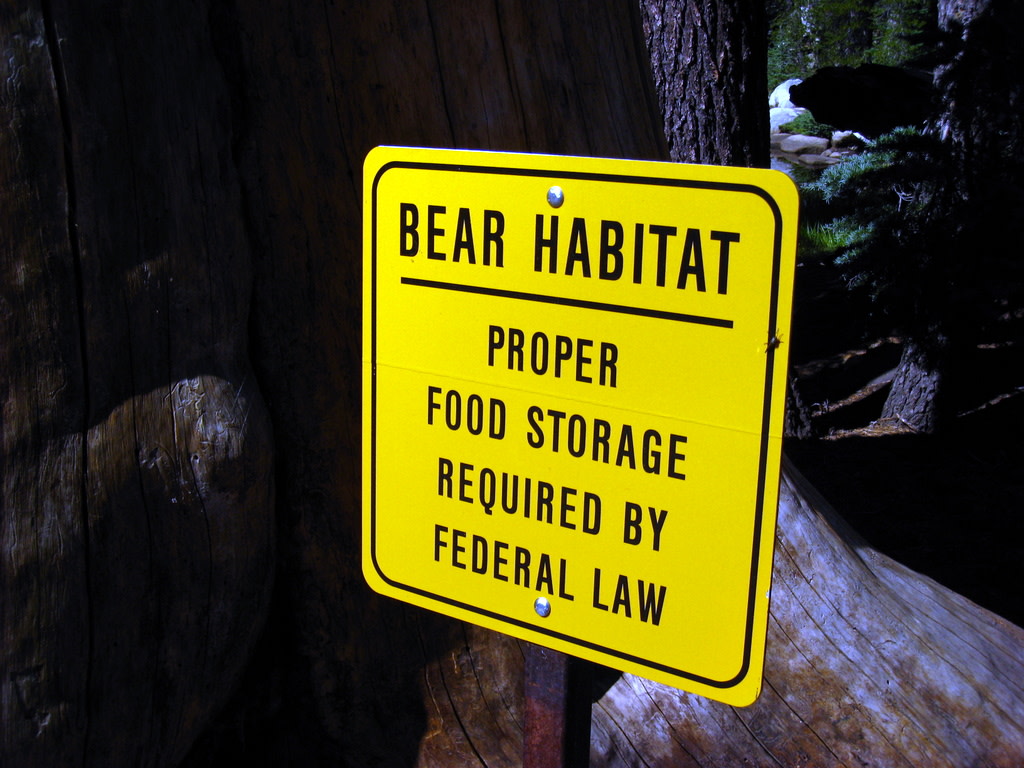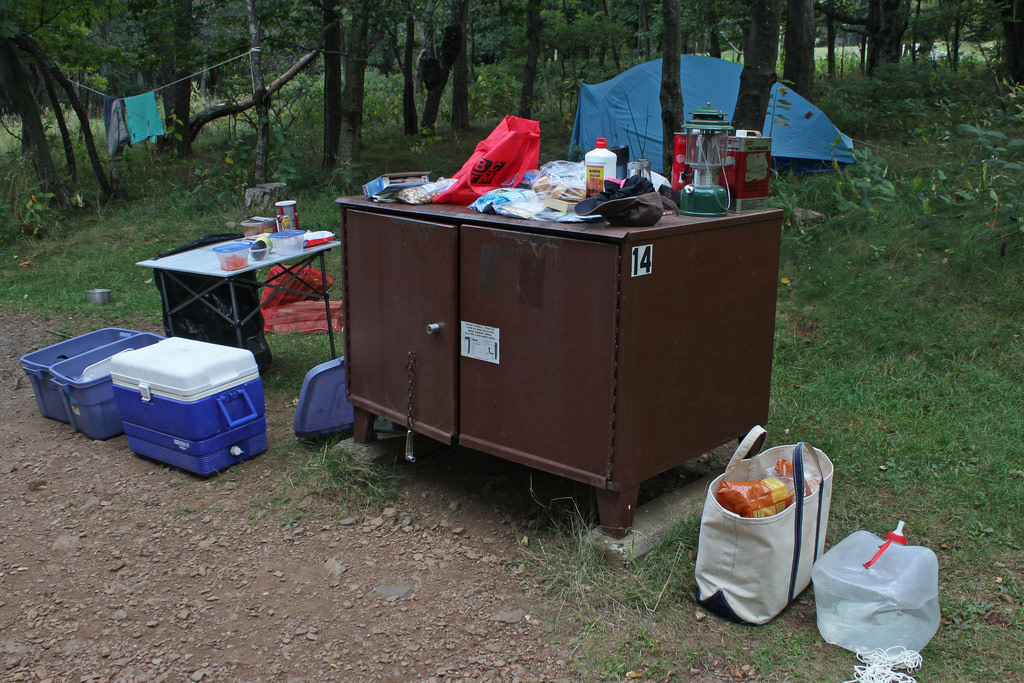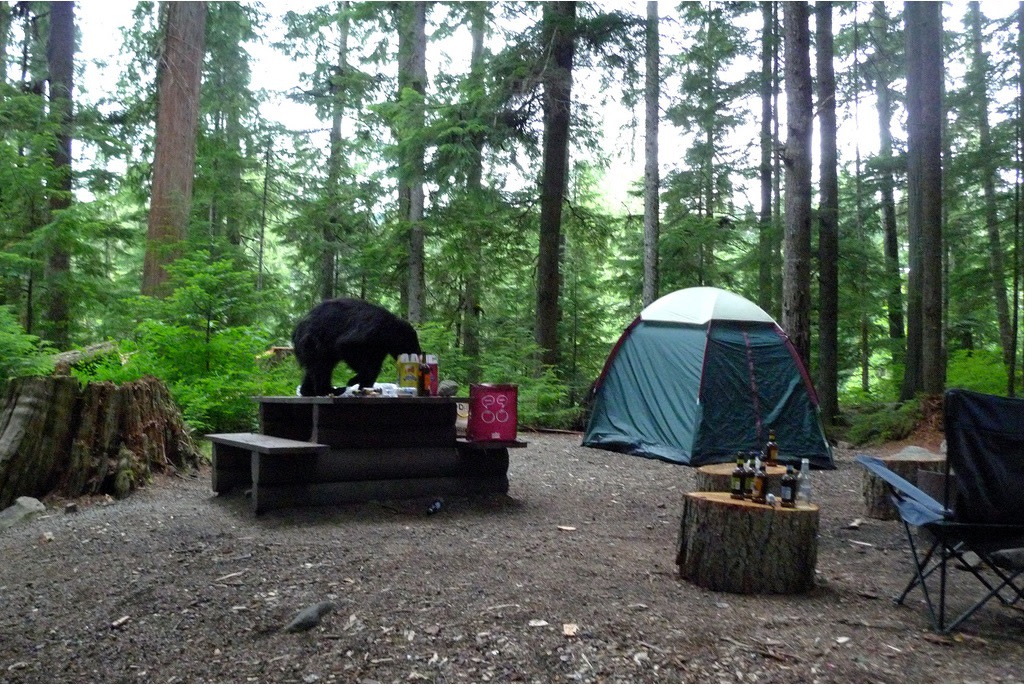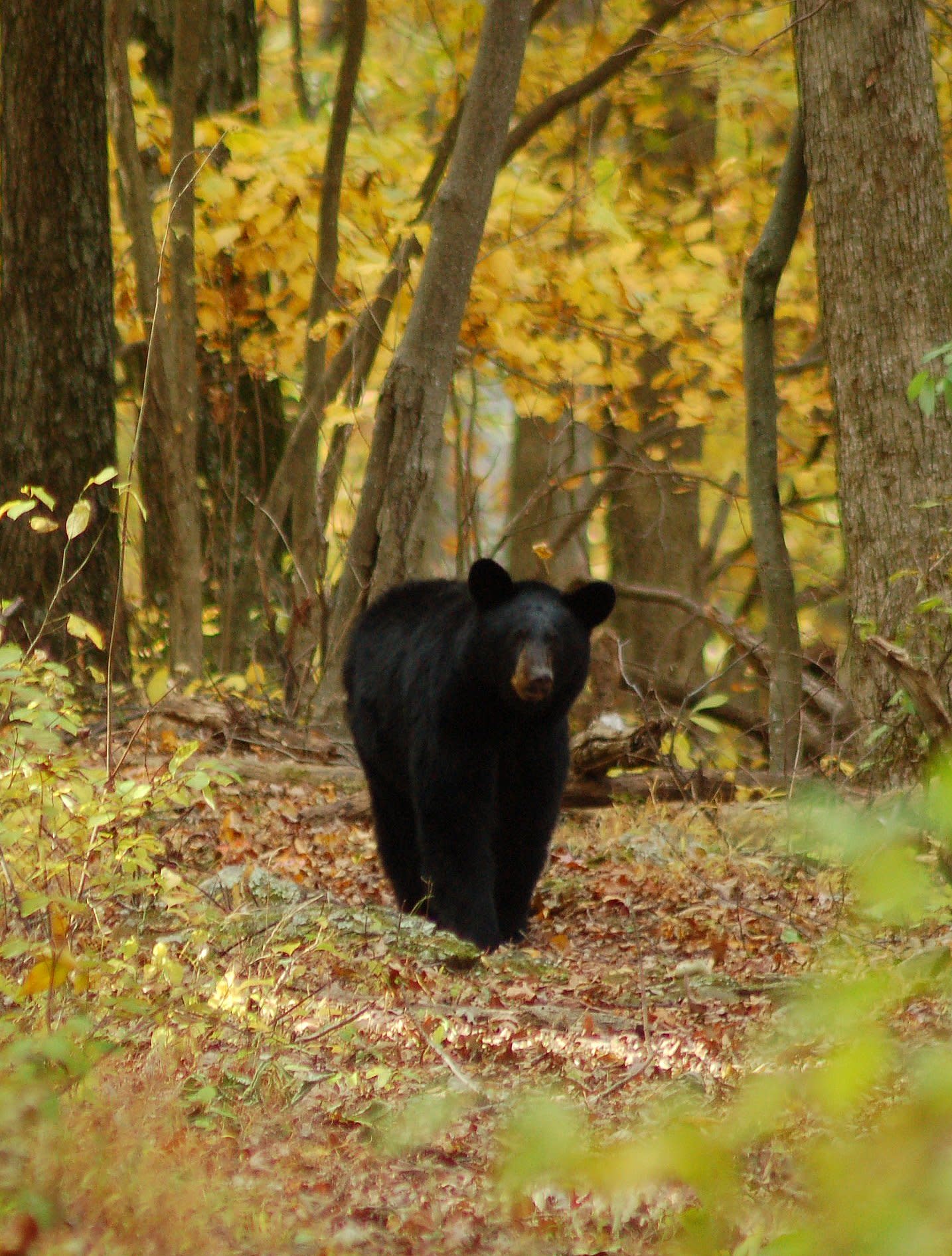Bear Safety
Chris Sunnen is one of those jack-of-all-trades kind of explorers we all wish we could be, he climbs, he surfs, he skis, he runs, he does it all. Follow along with his adventures at his website The Last Adventurer. He's also a former Yosemite backcountry ranger, so we sought his help in understanding how to safely watch bears while minimizing risk to yourself.
Note, this protip focuses on safety with respect to the bears you might see in California
In the Wizard of Oz, the scared and awed refrain of Dorothy and her friends was “Lions, Tigers, and Bears – oh my!” In California, however, the scared and awed refrain of novice campers, hikers, and backpackers is “Bears, Bears, and Bears – oh my!” To this end, as a former Yosemite backcountry ranger I can tell you the thing that everyone wanted to see was bears. Along these lines the thing that everyone didn’t want to see was also bears. Out of every wilderness creature that graces California, there is no animal – outside of Sasquatch - that is that draws a more conflicted response than bears. To me, bears draw this kind of a response because they are majestic; they are noble; they are funny; they are smart; and they are truly wild. The last part is worth noting: bears, like humans, are apex predators, meaning they occupy the top of the food chain. Unlike humans, however, they have no inhibitions about getting what they want when they want it; and this is because they are wild animals.
While the last point may sound scary, it isn’t: it’s a mere fact. It’s something that you, the visitor have to realize when dealing with, preparing for, or in encountering a bear. As long as you know what they are (wild animals), you will know how to act accordingly, which will make your experience one that is amazing and not one that is terrifying or horrible. Before I get down to the nitty-gritty on how to prepare for bears in the backcountry of California, let me clarify what we are talking about when we say “bears”. In California in 2015, there is one kind and only one kind of bear, and that bear is the standard black bear. These bears may look blonde colored, brown colored, browndish-blonde colored, or regular black colored, but they are all just black bears. The California grizzly bear is long extinct; and there are no other grizzlies in the state. This is good, because in general, black bears are more scared of people than people are of them. While this may seem like hyperbole, it is a fact that there have been no fatalities in California from bear attacks; and only twelve recorded attacks in the state since 1980.
In terms of dealing with bears, the 3 most common things people have to focus on are:
- Dealing with bears while driving a car and then parking the car
- Being prepared for bears in the campground
- Knowing how to deal with bears on trail
Some of these categories have the same rules, but not all of the rules are the same. The common factor in dealing with bears is simple: be bear aware; and exercise Leave No Trace principles. As I mentioned above, if you follow these rules, and prepare properly, should you see a bear, the visit will be one that you appreciate – rather than one that you end up hating.
Bear safety on the road or in a parking lot
There are two situations that involve bears in relation to cars: driving the car, and parking the car. Out of the two, driving is the easier situation to handle. It is possible that when you are in California’s wilderness areas, you will see a bear from your car; or will see a bear in the road. My advice: do what you normally do, and drive like a normal person who took Driver’s Education and ultimately took the Driver’s License exam. Do not stop in the middle of the road. That is a bad idea for the bear, and a bad idea for you, and it will cause accidents. If you want to watch the bear further from the safety of your car, drive like a responsible person, and calmly pull over to the side of the road where it is safe.

The area that many beginner hikers and backpackers have trouble with regarding bears and cars is leaving their car parked at the trailhead, or in any area of the park they are visiting. Many people do not understand that they have to remove all food from their car in active bear areas when they are not in it. If you’ve never been camping in the Sierra Nevada range, or other places in California, the reason you have to remove food from your car in certain areas is because bears will break into your car to get your food. Really. As a Ranger, and now as a park visitor, I have heard people say innumerable times that despite the laws that mandate proper food storage, and despite the warnings about proper food storage, they can leave food in their car because “the bear won’t be able to smell it”. Let me assure you that it does not matter what type of car you drive, a bear will smell food in it.

The reason a bear will smell food in your car is because out of all animals, bears have the best sense of smell. On average, a bear has a sense of smell 2,100 times better than a human. So, again, no matter what type of car you have, a bear will smell food in it. Bears are also smart. Even assuming that there is a bear with a horrible sense of smell for whatever reason, they are also smart. Generations of bears have now learned to associate cars with food. This is one of many reasons that the laws regarding food storage exist: to change the association in the communal bear knowledge pool about cars and food. Therefore, a bear doesn’t necessarily need to smell food in a car to break into it – because in many cases, it may assume that a car has food simply by past experience – or watching other bears. A bear’s intelligence and sense of smell are just two of the many good reasons not to leave food in your car.
The main reason not to leave food in your car, is the simplest: it is the law. Assuming you leave food in your car, and a bear breaks into it, 3 things will happen:
- You will have a seriously damaged car from the bear (in breaking into cars, bears generally pull down windows, climb in, and chew on things)
- You will get a ticket from whichever park authority you are visiting, as proper food storage is the law (these tickets are expensive to say the least)
- The bear will likely use your car as its own bathroom (really!).

Any one of these three things should be enough of a deterrent. Finally, there is a practical component here. As I mentioned above, generations of bears have learned that cars=food. This is a bad thing. It leads to bears that are habituated to humans; habituated to breaking into cars; and habituated to acting aggressively. All of these things are bad for people and bad for bears. So, if you want to keep bears wild – and present for future generations, all you have to do is remember to store your food at trailheads and other areas in the bear lockers that are provided. In 2015, there are plenty of them, so this really should not be a challenge. If you do this, I guarantee that you will not have to worry about your car being damaged by bears, which is the last thing you want to worry about on your trip. So, be bear aware: drive responsibly on roads; and store your food properly outside of your car. If you do these things, you’ll have a great trip – and if you’re lucky, see a bear.
Bear safety at camp
In California, there are two types of campgrounds: developed and backcountry. Each of these sites has a different type of regulation; and a different set of facilities. Developed campgrounds, like trailheads have food storage requirements. Because wild animals, including bears, that eat human food become habituated to it, and then behave badly down the road, which is something that all of us would like to avoid. Fortunately, storing food in a developed campground is easy: like trailheads, parks provide ample storage lockers for each site; and such lockers are large enough to accommodate everything one would need to store, including coolers.

At a developed campsite
Campers in developed sites should also keep an eye on their food during meal preparation and mealtime, because as I mentioned before, bears are very smart, and are masters at swooping in and stealing food while people’s backs are turned. While this may seem counter-intuitive because of all of the people and cars in the developed campground, it goes to the negative conditioning I have been mentioning: like cars, some bears have learned to associate developed campgrounds with food. Bear incidents in developed campgrounds are simply higher because there are more people; and more opportunities for improper food storage. In the event you are in a developed campsite and a bear should wander through your campsite because of another party’s improper food storage, all you need to do is wait (and nab some photos if you can). Trained rangers will handle the incident.
At a backcountry campsite
Unlike developed sites, backcountry sites have no facilities, but they still have bears. In California, backpackers should utilize a bear canister or other approved portable bear-proof container. Backpackers should NOT hang food from a tree. Hanging food from trees is a complicated process to do correctly, and the sad truth is that for the last thirty years in California, bears have known how to defeat the method. And the simple fact is that bear canisters are substantially easier to use properly. If you don't have a bear canister, this is not a place to skimp! Rent a bear canister for just a few dollars from Last Minute Gear, be sure to your bear canister rental has enough space to contain all of your food and personal care items.
While each canister has a proprietary blend of materials, most of these canisters are made of reinforced plastic. While a plastic container may not seem like the way to stop bears from getting human food, they do work – and they do work extremely well. I’ve been using canisters since 1996, and while they have become lighter over the years, they have not become less effective. I’ve seen bears bite them (or at them), bash them into rocks, or generally do whatever they can do get in them. I’ve never seen a canister fail; nor have I heard of it happening when the lid was attached correctly.
The only drawback to using bear canisters are the space requirements – one has to plan how much food they will have, and plan how it will fit in the canister. My suggestion is to do a test run a few days before a trip. Once at the backcountry site, the canister should be placed at least 15-20 feet away from the site to avoid any potential problems (some brands recommend at leas 100 feet). From that point on, one can relax in the heart of the wilderness with the knowledge that the food is secure.
Bear safety on the trail
Out of all of the categories, this one is the easiest. In terms of dealing with bears – or any other wildlife on the trail, the best suggestion is obvious: give the wild animal (bear) its own space. Although there are not many problems between humans and bears in California in the last twenty years, the problem incidents stem from people entering the bears’ space, and not respecting their boundaries. If you encounter a bear, speak in low tones, give it its space. By all means, take pictures, watch the bear, and be amazed – but as I said, be sure to do it from a safe distance.
In rare occasions, bears in the Sierras will approach people on the trail. The reason? They are looking for food, and in the past, when they approached hikers, the end result was the hikers fleeing while leaving food. Such behavior is called a “bluff charge,” and while not common, it sometimes occurs. The solution to such behavior is simple: stand your ground. Do not run off; do not leave food behind. If you do this, you will find that the bear will wait, and then shuffle off dejectedly. Finally, if you feel that you are on a trail with an aggressive bear, make noise, make yourself as big as possible, and if necessary, throw rocks, because you are dealing with black bears that frighten easily. The thing to bear in mind though, is what I began with: black bears in California historically have not behaved aggressively to people, which appears unlikely to change. While “bluff charges” do exist, one should remember that these encounters are not the norm, and realize that in all likelihood that the bear is as scared of you as you are of it.
If you follow these tips on storing food properly and maintaining the proper distance, chances are if you see a bear, it will lead to a great experience and trip!
